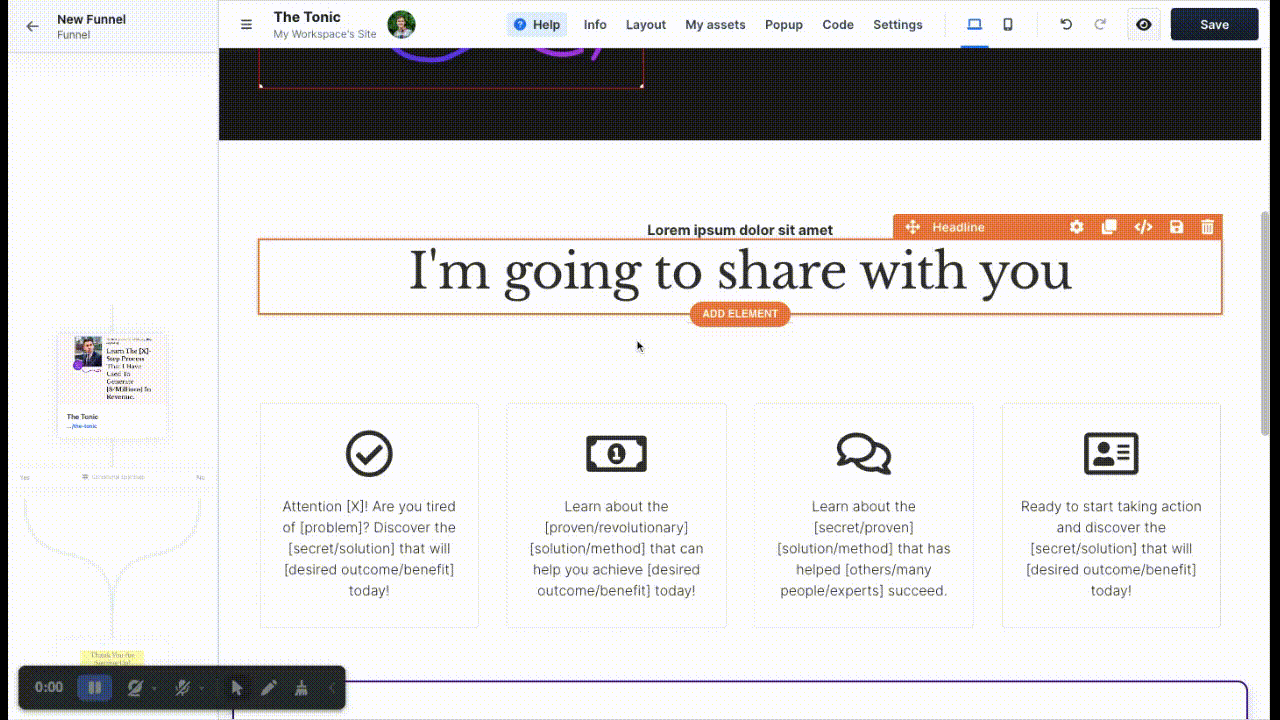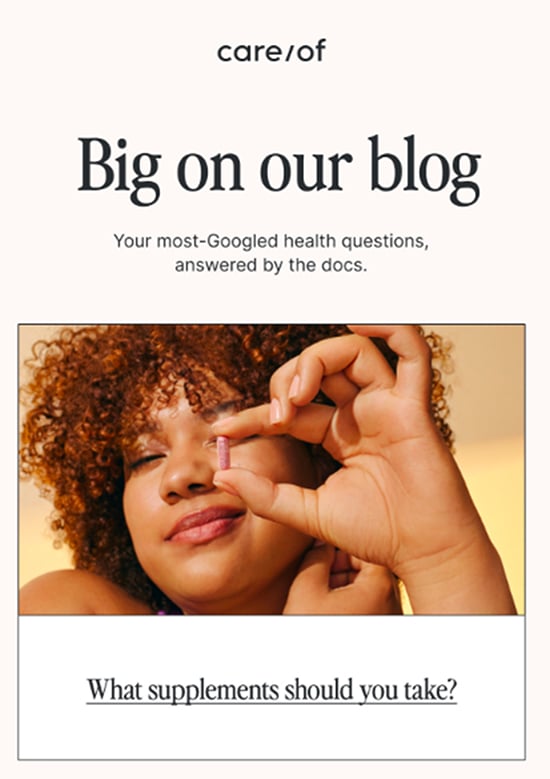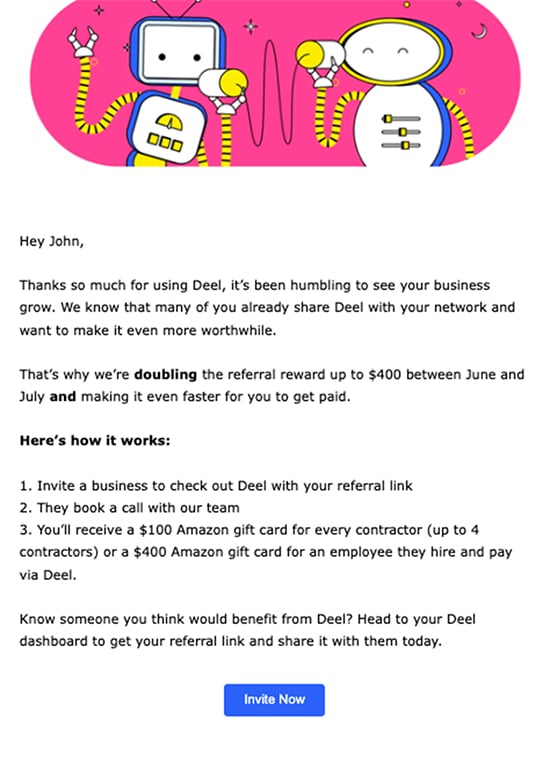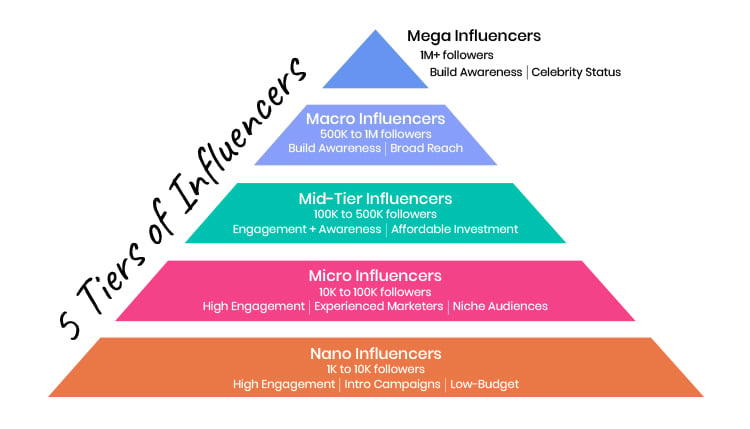You might have the best product, an exceptional team, and the latest technology.
However, without customers, these assets lose their impact.
In this guide, we’re going to show you how to effectively acquire customers, ensuring your business thrives. It’s all about creating a customer acquisition funnel that not only attracts, but also retains customers, setting your business up for sustained success.
Let’s get started.
What is Customer Acquisition?
Customer acquisition is not just about randomly attracting people to your business; it’s a strategic process of finding and persuading the right customers — those whose needs and preferences align perfectly with what you offer — to buy from you.
This process isn’t left to chance. It involves three key components:
- Best-fit Customers: Focus on individuals who are most likely to benefit from and appreciate your offerings. These are customers who find real value in what you provide, making them more likely to engage with your business long-term.
- Measurable Approach: The process should be quantifiable. This means using clear metrics like conversion rates and cost-per-acquisition to track and evaluate the effectiveness of your strategies. By measuring, you can understand what works and what doesn’t, allowing for informed decisions and strategy adjustments.
- Repeatable Strategy: Your customer acquisition efforts shouldn’t be a one-time, ad-hoc initiative. Instead, they should be a reliable, repeatable process that you can implement time and again, ensuring consistent growth and customer engagement.
These components come together in what is often visualized as the customer acquisition funnel, which consists of stages like awareness, interest, desire, and action.
Each stage represents a step in the journey of converting a prospective customer into a paying one, providing a structured approach to turning interest into sales.

1 — Paid Marketing
Paid marketing involves directly paying for advertising space or exposure.
This can be done through various channels, including Google, social media platforms, YouTube, and banner ads on websites. The core goal of paid marketing is to effectively and quickly reach potential customers, boosting both sales and brand awareness.
Why is Paid Marketing Beneficial?
- Targeted Reach: Paid ads enable you to reach specific audiences tailored to your product or service. This precision targeting increases the likelihood of engaging potential customers who have a genuine interest in what you offer.
- Scalability: One of the most significant advantages of paid marketing is its scalability. You can adjust your efforts and budget depending on performance, allowing for flexibility in strategy and expenditure.
- Speed: Unlike organic methods, which take time to build momentum, paid marketing can yield immediate results. This immediacy is crucial in fast-paced market environments where quick visibility is essential.
- Brand Awareness: Paid marketing also plays a vital role in brand recognition. Even if users don’t immediately click on your ads, the repeated exposure increases awareness of your brand, which can lead to future engagement.
Paid marketing is versatile and can be effective at various stages of the customer acquisition funnel.
At the top of the funnel, its primary role is in creating brand awareness and reaching new audiences. This stage is crucial for introducing your brand and offerings to potential customers, setting the stage for further engagement down the funnel.
For example…

Instead of advertising products directly, you can promote free materials like master classes, webinars, eBooks, or guides.
Here’s another example…

This ad from Russell reaches out to the right target audience — people who want to launch their online businesses. And offers something for free. It increases the chances of getting the lead compared to if he were directly selling ClickFunnels.
You can use ClickFunnels to create & edit the landing page where people will go after clicking your ad…

You can also use remarketing to get in front of those who bounced before finishing their purchase.
For example, I was searching the Decathlon site but didn’t purchase anything. Here’s an ad I saw later that day…

Or here’s an example from Magic Spoon targeted to people who are aware of the brand, enticing them with discounts…

2 — Run Email Marketing Campaigns
Email marketing is a cornerstone. It involves sending tailored emails to a selected group of individuals.
The content of these emails varies widely, encompassing promotional messages, informational content, newsletters, and personalized offers and updates.
The primary goal of email marketing is to cultivate relationships with potential and existing customers, encouraging them to engage with your brand and ultimately drive sales.
Why is Email Marketing So Effective?
- Direct Communication: Email allows for a direct conversation with your audience. Unlike other marketing channels where messages can get lost in the noise, emails land directly in a person’s inbox, increasing the chances of being seen and read.
- Cost-Effectiveness: Email marketing is known for its high return on investment (ROI). The costs associated with sending emails are relatively low, especially when compared to other marketing channels, making it a highly cost-effective option for businesses of all sizes.
- Automation Potential: One of the most significant advantages of email marketing is the ability to automate processes. With tools like ClickFunnels, you can set up workflows that automatically send emails based on specific triggers, such as a customer’s previous interactions with your brand. This automation saves time and ensures a consistent and personalized experience for each recipient.
Email marketing’s effectiveness lies in its ability to maintain ongoing communication with your audience, keeping them engaged and informed about your brand, and priming them for future purchases.
With ClickFunnels, you have total control over your email marketing flows!

And in case you’re wondering what stage of the funnel email marketing is effective for…
- Middle — Nurturing the leads. Send targeted content that educates and builds trust with the audience.
- Bottom — Sending promo emails. Encourage sales with exclusive offers, discounts, or limited-time deals. Create emails that convey a sense of urgency or scarcity to prompt immediate action.
For the middle of the funnel, you can send…
Educational newsletters…

Industry updates…

Brand stories…

Product information…

Here are some emails you could send for the bottom of the funnel…
Promotional emails…

Re-engagement emails…

You can create all of these emails with ClickFunnels 😉
Just choose a template…

Use our drag-and-drop editor. Every email is mobile optimized.

And then hit send. That’s it!
Email marketing is one of the most powerful tools at your disposal — use it!
3 — Invest in Content Marketing
Content marketing is a strategic approach focused on creating and sharing valuable, relevant, and consistent content.
The aim is to attract and retain a clearly defined audience, with the ultimate goal of driving profitable customer action.
Unlike direct sales tactics, content marketing isn’t about immediate conversions. Instead, it’s about establishing your brand as an expert, an authority, and a thought leader within your industry. This approach is key in building trust with your audience.
The Essence of Content Marketing:
The heart of content marketing lies in its emphasis on providing content that is genuinely useful to your audience. This can be in the form of blog posts, videos, infographics, podcasts, or any medium that best suits your audience’s preferences and your brand’s strengths.
The content should offer insights, solutions, or entertainment that resonates with your target audience, making your brand a go-to source in your field.
By consistently offering high-quality content, your brand becomes more than just a provider of goods or services; it becomes a valued and trusted resource.
This trust is fundamental in building long-term relationships with customers, which are essential for sustained business growth.
| Content Type | Examples of platforms that host such content |
|---|---|
| Video | YouTube, Vimeo, TikTok |
| Audio | Podcasts (Apple Podcasts, Spotify), Music Streaming (Spotify, SoundCloud) |
| Visual | Instagram, Pinterest, Behance |
| Text | Blogs (Website, Medium) |
For example, if you searched for ‘building a webinar funnel’…

And click on our link you will find this blog…

You’ll also discover our product and can become a potential customer later on. You’ll also know that ClickFunnels is an authority on funnels.
Apart from establishing authority, Content marketing often leverages storytelling to create an emotional connection with the audience. Humans are naturally drawn to stories. Emotionally engaged customers are more likely to remember a brand and make purchasing decisions based on this connection.
For example, Uber Eats YouTube channel creates humorous, story-type videos…

By consistently providing content that aids in relaxation and mental wellness, Calm reinforces its brand association with these concepts, strengthening its position in the wellness market.

Make sure to post content for various stages of the funnel.
Here’s some top of funnel content we post on our blog…

And here’s an example of a post that’s more middle-of-the-funnel.

And then bottom of the funnel:

Content marketing is a long-term strategy that requires commitment and creativity. The investment in this approach pays off through increased customer loyalty, higher engagement rates, and ultimately, a more substantial and dedicated customer base.
4 — Encourage Referrals
Referral programs are a powerful marketing tool where your existing customers recommend your products or services to new potential customers.
This strategy works exceptionally well due to its authenticity and the trust factor it brings. People are more likely to trust personal recommendations from friends or family over traditional advertising. Referral programs also provide social proof, as they showcase the satisfaction and loyalty of your existing customer base.

Why Referral Programs Work
- Authenticity: Referrals come from real users who have experienced your product or service, making the recommendation genuine and trustworthy.
- Trust Factor: People tend to trust recommendations from someone they know, making referrals more effective than many other marketing methods.
- Personalization and Social Proof: Referral programs personalize the shopping experience and provide social proof, as customers see that others are using and enjoying your products or services.
How to Execute a Successful Referral Program:
Decide on the Incentive: Offer incentives that are attractive to both the referrer and the referee, such as discounts, free products, or service upgrades. This makes the program appealing and mutually beneficial.

Create an Easy Referral Process: The process should be straightforward, often involving unique referral links or the option to add an email address. For example, Casper uses email addresses for referrals.
Promote Your Referral Program
If you’ve spent the time to build out a referral program, then you need to promote it!
Here’s how to do that…
- Send emails informing customers about the program and its benefits.

- Utilize social media platforms to remind your audience about the referral opportunity.
- Include referral information as inserts in product packaging.

- Display messages encouraging referrals after purchases.
- Train customer service representatives to inform satisfied customers about the referral program.
By encouraging referrals, you not only gain new customers but also strengthen your relationship with existing ones, fostering a community of brand advocates.
Referral programs are a win-win: your customers enjoy rewards, and your business enjoys growth.
5 — Collaborate with Influencers
Influencer marketing involves partnering with influential people in a particular industry or niche to promote your products or services.

The impact of your influencer marketing efforts largely depends on the tier of influencers you choose, which should align with your goals and budget. Influencers are typically categorized into tiers based on their follower count and reach, from nano and micro-influencers to macro and mega influencers.

Why Influencer Marketing Works:
Social Proof: Influencers have built-in audiences that trust their opinions and recommendations, offering instant credibility to your product.
Credibility: Since influencers are often seen as authorities in their fields, their endorsement adds a layer of trustworthiness to your brand.

There are two main strategies you can use for collaborating with influencers…
Free Gifts: This approach works well with nano and micro-influencers. You send them free products in exchange for a shoutout or review. It’s a cost-effective strategy that can yield significant results, especially if the influencers’ audience aligns well with your target market.

Commission-Based Collaboration: In this model, influencers get a commission for every sale made through their unique referral link or code. This method is risk-free for your business, as you only incur costs when actual sales are made. It also motivates the influencer to genuinely promote your product, as their earnings are directly tied to their efforts.

When you partner with an influencer, you can also ask them to create content that you can repurpose for your content marketing strategy. This dual approach not only boosts your influencer marketing efforts but also enriches your content strategy, ensuring a broader impact and a more cohesive marketing campaign.

Influencer marketing, when done right, can be a powerful tool in your customer acquisition arsenal, leveraging the trust and authority of influencers to expand your reach and credibility.
How to Check if Your Customer Acquisition Strategy Makes Financial Sense?
Evaluating the financial viability of your customer acquisition strategy is crucial for understanding its effectiveness and scalability.
A key metric in this assessment is the Customer Acquisition Cost (CAC).
Calculating Your CAC:
The formula to calculate CAC is straightforward:
CAC = Total Costs Spent on Acquiring Customers / Number of Customers Acquired
In this equation, ‘Total Costs Spent on Acquiring Customers’ includes all marketing and advertising expenses, salaries of sales and marketing staff, costs of marketing and sales tools, and any other overheads directly tied to acquiring new customers over a specific period (like a month, quarter, or year).
Example Calculation:
Let’s assume a company spends in a quarter:
- $50,000 on online advertising
- $30,000 on salaries for their sales and marketing team
- $10,000 on marketing and sales software
And they acquired 200 new customers in the same quarter. The CAC would be:
CAC = ($50,000 + $30,000 + $10,000) / 200 = $450
Thus, the Customer Acquisition Cost is $450 per new customer.
Why CAC is Important:
- Efficiency Indicator: A lower CAC suggests a more cost-effective strategy, implying that the business is acquiring more customers for less money. This is crucial for maximizing ROI.
- Comparative Analysis: By comparing the CAC of different channels, you can identify which ones are more efficient and viable for customer acquisition.
- Scalability Insights: For businesses aiming to scale, understanding CAC is essential. It helps determine if the current customer acquisition strategy is sustainable and scalable. A high CAC might indicate that scaling up could be challenging without significant strategy adjustments.
Monitoring and analyzing CAC helps in making informed decisions about where to allocate resources and how to tweak strategies for better performance and profitability.
How To Build A Funnel For Customer Acquisition
ClickFunnels software is extensive — you can use it for building funnels, email marketing, websites, course creation, and tons more.
(Here’s a list of all our features!)
And you can also use it to build your customer acquisition funnel.
Use ClickFunnels as a tool so you can focus on the strategy while the technicalities are handled by ClickFunnels.

Lead Generation: ClickFunnels provides templates and tools to create landing pages that are optimized for capturing leads. By offering incentives like free e-books, webinars, or discounts, you can attract potential customers.

ClickFunnels offers A/B testing and analytics to help identify what works best for your target audience.

Sales Integration: With seamless integration with various payment gateways and shopping carts, ClickFunnels can facilitate the final step of converting a lead into a paying customer.
In other words, all you need is ClickFunnels 😉
Final Thoughts
Crafting a successful customer acquisition funnel is a dynamic and crucial aspect of growing your business.
By exploring various strategies like paid marketing, email campaigns, content marketing, referrals, and influencer collaborations, you can diversify your approach to attract a broad range of customers.
Remember, the key is not only to draw in new customers but to do so efficiently and sustainably. Regularly evaluating the effectiveness of your strategies, especially through metrics like Customer Acquisition Cost (CAC), ensures that your efforts are not only bringing in customers but are also financially viable.
As you refine your customer acquisition strategies, stay adaptable and always be ready to evolve with changing market trends and customer behaviors. With the right approach, your customer acquisition funnel will not just function; it will thrive, propelling your business to new heights.

